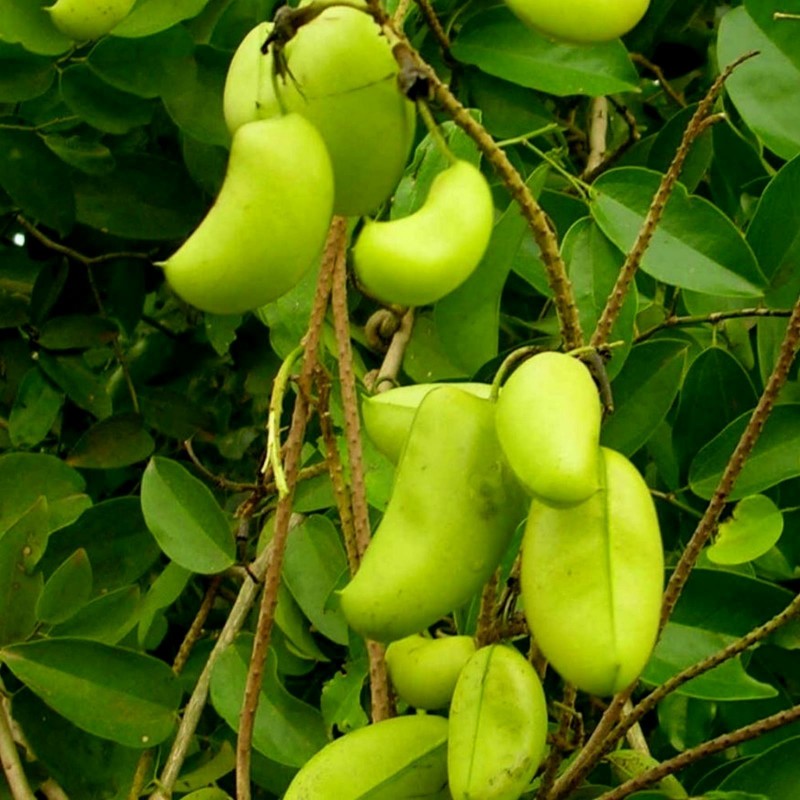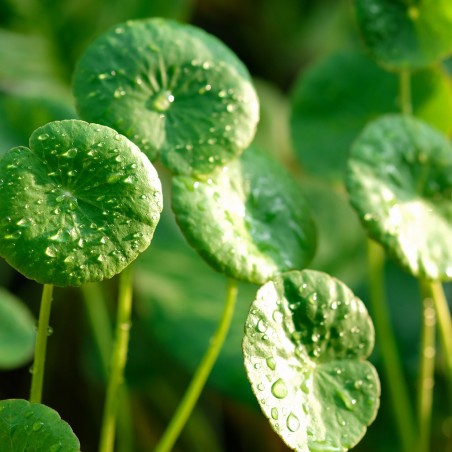
Atooto, Bandeiraea Seeds (Griffonia simplicifolia)
Atooto, Bandeiraea Seeds (Griffonia simplicifolia)
Price for Package of 5 seeds.
Griffonia simplicifolia is an evergreen, hard-wooded shrub or large climbing plant with short strong woody tendrils. It can grow to about 3 meters tall. A multipurpose plant with a wide range of medicinal uses
Atooto, Bandeiraea Seeds (Griffonia simplicifolia)
Price for Package of 5 seeds.
Griffonia simplicifolia is an evergreen, hard-wooded shrub or large climbing plant with short strong woody tendrils. It can grow to about 3 meters tall.
A multipurpose plant with a wide range of medicinal uses, some minor edible uses, and various miscellaneous uses, it is commonly harvested from the wild for the local community. The seeds are a commercial source of 5-HTP, a serotonin precursor widely used in the treatment of depression and other conditions. The seeds are collected from the wild on a commercial basis and are sold internationally in large quantities.
Even though Griffonia simplicifolia is reportedly common, the high commercial value of the seeds forms a serious threat. Destructive harvesting combined with high grazing pressure could contribute to the reduction of populations.
Cultivation Details
Although many species within the family Fabaceae have a symbiotic relationship with soil bacteria, this species is said to be devoid of such a relationship and therefore does not fix atmospheric nitrogen
Edible Uses
The leaves are used in the production of palm wine and give the wine a bitter taste.
The sap that exudes from cut stems can be drunk to quench thirst.
Medicinal
The pulped bark is applied to syphilitic sores.
A leaf decoction is used as an emetic, cough medicine, and aphrodisiac.
The leaf sap and is drunk or applied as an enema to cure kidney problems.
The leaf sap is used as eye drops to cure inflamed eyes.
A paste made from the leaves is applied to burns.
A decoction of stems and leaves is taken as a purgative to treat constipation and is used externally as an antiseptic wash to treat suppurating wounds.
Chewing the stems is claimed to produce an aphrodisiac effect.
Stems and stem bark are made into a paste that is applied to decaying teeth.
The powdered twig bark, combined with lemon juice and Capsicum pepper, is applied to scarifications to treat intercostal pain.
An extract from the powdered roots has been used to treat sickle cell anaemia.
The seed is a commercial source of 5-hydroxytryptophan (5-HTP), a serotonin precursor. In humans, 5-HTP increases the synthesis of serotonin in the central nervous system and has been shown to be effective in treating a wide variety of conditions, including depression, fibromyalgia, obesity, chronic headaches and insomnia.
The leaves contain a volatile oil and coumarins.
The cyanoglucoside lithospermoside (= griffonin) has been isolated from the roots; it is the active ingredient against sickle-cell anaemia.
Isolectin B4, isolated from Griffonia simplicifolia, is used as a marker of small primary sensory neurons in neurological research[
Other Uses
The leaves are put in chicken pens to kill lice.
The roots are chewed and dried to produce a white powder that is used by women to powder their face.
A black dye is obtained from the leaves.
The stems are used to make baskets and cages.
The stems are beaten into fibres that serve as chewing sponges, a popular means of tooth cleaning in Ghana.
The stems and roots are used as chew-sticks to clean the teeth and maintain gum health and oral hygiene.
The seeds contain the compound 5-HTP, which is poisonous to certain insects, i.e. bruchids (Callosobruchus maculatus).
A number of lectins are found in the seeds. One of them is of the acetylglucosamine-group, which is commonly found in Poaceae and Solanaceae, but is rare in Fabaceae. Some lectins have insecticidal properties.
The pods are made into toy whistles and spoons.
The wood is hard and fairly tough. It can be bent and after crooking is used for making walking-sticks.
| HEIRLOOM ? | Yes |
|---|---|
| Organic Seeds ? | Organic Seeds |
| Edible ? | Edible |
| Pretreatment of sowing ? | Soak in water before sowing 12-24 h |
| Life Cycle: | Perennial plant : Yes |
| Handpicked seeds ? | Handpicked seeds |
| Plant height ? | Plant height (about) 3.5 m |
| Medicinal Plant ? | Medicinal Plant: Yes |


Your review appreciation cannot be sent
Report comment
Report sent
Your report cannot be sent
Write your review
Review sent
Your review cannot be sent
🌍 Worldwide Shipping from the EU
We ship worldwide from the European Union using registered air post with signature confirmation on delivery.
📦 Tracking Your Order
Log in to your account and go to Order History > Details to find your tracking number.
You will receive email notifications at every step — please check your spam/junk folder if you don’t see them.
Track your package via:
⚠️ Important Notices
Cash on delivery is not available.
Always provide a valid mobile number with country code when ordering (e.g., +365 456 7686 576).
Do not order to P.O. Boxes or if you cannot be home to sign for the package. We cannot leave parcels with neighbors.
If a package sent to a P.O. Box is lost or undelivered, you lose the right to a refund.
📦 Lost, Returned & Reshipping Packages
For customers in Brazil and Mexico:
We cannot refund packages lost or destroyed by customs.
If your package is returned, we will refund only the product cost — shipping costs are not refundable.
You must pay return postage (€2) and any costs for reshipping.
If a package is returned to us for any reason, you are responsible for paying the return shipping (€2) plus the cost to resend the package.
🚚 Shipment Delivery
Registered shipments require a signature from the recipient.
If your tracking shows the package is still at the origin post office, it means the package is in transit — please contact your local post office directly for updates.
We are not responsible for delivery times and cannot track shipments for you.
📅 Delivery Options & Estimated Times
Delivery Option Processing Time Notes Priority Delivery Ships in 1-7 business days Prioritizes order processing (not guaranteed faster delivery); delays possible during holidays (3-10 days) Secured Delivery Ships in 1-7 business days Available for orders up to €150; refund if lost Standard Delivery Ships in 7-10 business days More economical; delays possible during holidays (7-14 days) Estimated Delivery Time:
Within the EU: 3–20 days
Worldwide: 5–30 days
Example delivery times to the USA:
Delivered in 13, 17, 19, 22, or 27 days.Note: Delivery times depend on your location and the local postal system. COVID-19 may cause additional delays.
💰 Shipping Costs
Shipping and handling fees are calculated automatically during checkout based on the weight of the parcel and the destination country.
⏰ Order Processing Hours
We do not process or ship orders on Saturdays or Sundays.
💳 Payment Options
Bank Transfer (SEPA / IBAN / SWIFT-BIC)
Include your order reference in the payment description (e.g., "SGS-19811702"). Orders without payment within 7 days are automatically cancelled.PayPal
Payments accepted in Euros only. Please select Euros at checkout.Card Payment
For card payments, visit our other site: Exotic Seeds Store
We accept Visa, MasterCard, American Express, CB, Diners Club, Discover, China UnionPay, JCB, and Discover.
⚠️ Transaction Fees
Customers are responsible for any transaction fees. Please provide payment details to help us process your order efficiently.
📢 Final Notes
Before placing your order, please check our website for any special notices, holiday schedules, or specific conditions that may affect your purchase.
Related Products

























